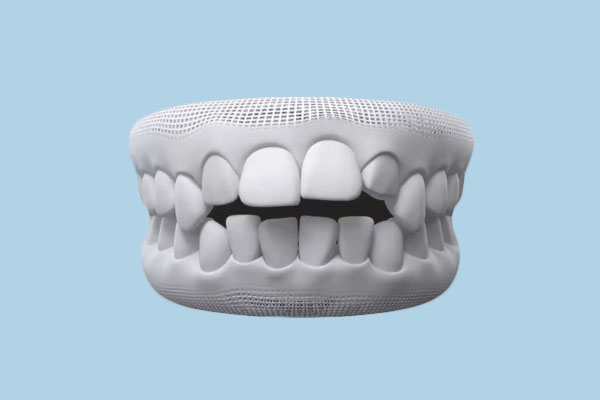Contents

Dental Open Bite: Causes, Consequences, and Solutions at Any Age
A dental open bite is a specific type of malocclusion where the upper and lower teeth do not make contact when the mouth is closed. This condition requires proper management to restore a functional and aesthetic bite. Discover everything you need to know about this orthodontic anomaly, its causes, and the modern treatments available to correct it at any age.
What is a Dental Open Bite and What Causes It?
A dental open bite is defined by a lack of vertical overlap between the upper and lower teeth. The most common form is an anterior open bite, where the front teeth don't touch, but it can also affect the back teeth (posterior open bite).
The causes are often multifactorial and can include:
- Skeletal Factors: An abnormal growth pattern of the jawbones is a common underlying cause.
- Oral Habits: Prolonged thumb sucking, pacifier use, or tongue thrusting (pushing the tongue between the teeth when swallowing) are major contributors, especially in children.
- Temporomandibular Joint (TMJ) Issues: In some cases, TMJ disorders can contribute to the development of an open bite.
The Health Consequences of an Untreated Open Bite
If left uncorrected, an open bite can lead to significant functional, aesthetic, and psychological issues:
- Chewing Difficulties: Inability to properly bite into foods like sandwiches or pizza.
- Speech Impediments: An open bite often causes a lisp or difficulty pronouncing certain sounds.
- Excessive Tooth Wear: The back teeth that do make contact must bear all the force of chewing, leading to premature wear and fractures.
- TMJ Pain: The improper bite can strain the jaw joints, causing pain and headaches.
Treating an Open Bite in Children and Teens
Early intervention is key. For a growing child, treatment focuses on correcting the underlying cause of the open bite:
- Habit Cessation: The first step is to stop habits like thumb sucking. Appliances can be used to help break the habit.
- Myofunctional Therapy: A therapist can help retrain the tongue and swallowing muscles to function correctly.
- Orthodontic Appliances: Braces or other appliances are used to guide the eruption of the teeth and the growth of the jaws to close the bite.
Treating an Open Bite in Adults
While more challenging once growth is complete, there are still highly effective options for adults:
Orthodontics for Adults
For mild to moderate cases, orthodontic treatment alone can be successful. Both traditional braces and clear aligners like Invisalign can be used. Treatment often involves the use of elastics (rubber bands) to help pull the teeth together into a proper bite.
Orthognathic Surgery for Adults
For severe, skeletal open bites, a combination of orthodontics and orthognathic (jaw) surgery is the gold standard. The surgery repositions the jaws into the correct alignment, providing a dramatic and stable improvement in both function and facial aesthetics.
Navigating the Cost of Open Bite Treatment
The cost of correcting an open bite depends on the chosen method. Orthodontic treatment typically ranges from $3,000 to $8,000+. If jaw surgery is required, the total cost can be significantly higher, though a portion is often covered by medical insurance due to its functional necessity. A detailed quote from your orthodontist and surgeon is essential.
Conclusion: The Importance of Correcting an Open Bite
A dental open bite is more than a cosmetic issue; it's a functional problem that can impact long-term health. Thanks to modern orthodontic techniques, it is possible to treat an open bite effectively at any age. Early diagnosis and management are key to preventing complications and achieving the best possible outcome.
FAQ: Your Top Questions About Open Bites
Yes, in many cases, especially in children and for mild to moderate cases in adults. Orthodontic treatment using braces or clear aligners, often combined with elastics and sometimes temporary anchorage devices (TADs), can successfully close an open bite without the need for surgery.
The best treatment depends on the underlying cause. Traditional braces are highly effective and predictable for closing open bites. Clear aligners like Invisalign are also very successful, particularly because their design naturally helps to intrude posterior teeth, which is a key mechanism for closing an anterior open bite.
Open bites have a higher tendency to relapse compared to other malocclusions, especially if the underlying cause (like a tongue thrust) is not corrected. This is why consistent, long-term retainer wear after treatment is absolutely critical to maintaining the results.
Yes, a significant open bite can affect facial aesthetics. It can lead to a longer-looking lower face, difficulty keeping the lips together at rest, and an appearance of straining to close the mouth. Correcting the open bite can create a more balanced and harmonious facial profile.
